I often get asked about how I sharpen my pencils, as I usually carry lots of them and they all have nice points, at the start of a session, anyway.
The key to good sharpening is that the sharpening tool must be very sharp. It is important to bear in mind that the two concepts
1. my knife is very sharp
and
2. my knife was very sharp when I bought it
are actually quite distinct, and the second is not enough for good sharpening: the first is what we need!
For this reason if you’re sharpening with a knife, I recommend using a throwaway craft knife (cheap in art shops and DIY shops) or a knife with a replaceable blade (such as a Stanley knife: again blades are cheap) and being ruthless about throwing away the knife (or replacing the blade) when it’s blunt. It’s surprising how quickly sharpening pencils eats up blades: if the knife is not tearing easily into the wood of the pencil then it’s too blunt. Don’t let frugality persuade you to hold on to a knife which is no longer up to the job! The idea is to use a knife which is very sharp and very cheap and accept that it won’t remain very sharp for very long and to throw it away when it’s not sharp enough any more.
First I pare away enough of the wood to expose a longish piece of “lead”:
Then I carefully pare the exposed lead to form a nice long point. It’s quite easy to break off the point at this stage: the trick is to support the point while you work on it.
Rest the point carefully on a tabletop (protected with a sheet of scrap paper) and holding at a suitable angle so that the lower surface of the point rests against the table while the upper side is sharpened. Rotate to sharpen the point on all sides: you want a nice long symmetrical conical point. Did I mention that you need a really sharp blade to do this?
This procedure gives a nice sharp point on your pencil, but it’s quite labour-intensive. What I use now is a Caran d’Ache pencil sharpening machine. It’s quite substantial and reassuringly heavy. I bought it online for about €120. It is also subject to the requirement that the blade must be sharp: if the blade is not sharp enough it just breaks off the points of the pencils you’re trying to sharpen. Replacement blades are available online for about €25, and as they don’t last very long it’s an expensive way to keep your pencils sharp! Why do I do it this way? Because it’s much more convenient than the knife method and always produces nice symmetrical points where the tip is exactly on the central axis of the pencil. This is important: an off-centre point makes it difficult to draw accurately.
Because the leads are often quite brittle, many of the sharpened pencil points are less than perfect. If nothing less than perfect will do, then you can use a little sanding board (or a manicurists emery board for nails) to refine the point. I don’t usually bother.
If you fancy the machine approach you don’t necessarily have to dig deep for a Caran d’Ache machine: there are plastic machines by Dahle and Lyra and other brands which seem to use the same blade as the Caran d’Ache (or very similar). They give similar results too. The box they come in tells you the part number for a replacement blade, but I’ve never been able to find one. The machines themselves cost about the same as the replacement blade for the Caran d’Ache.
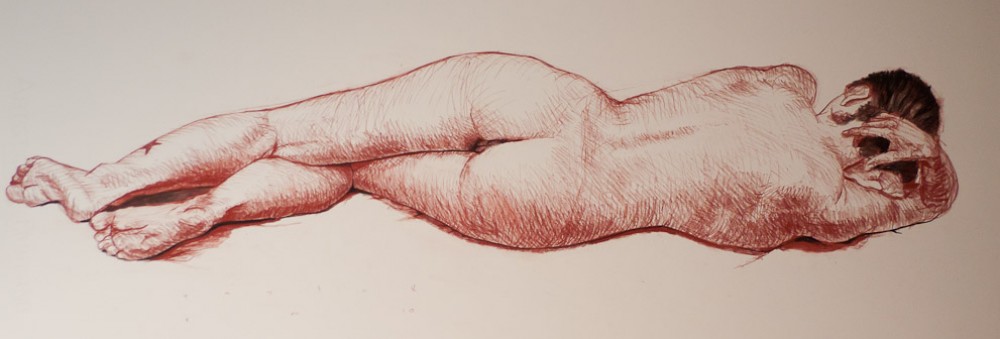
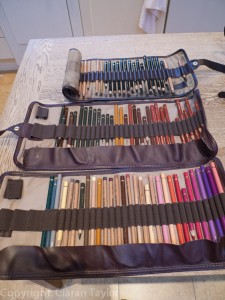




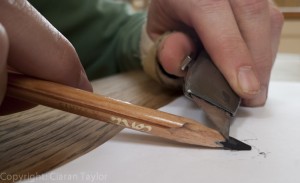
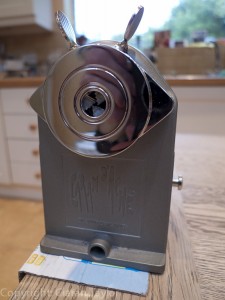
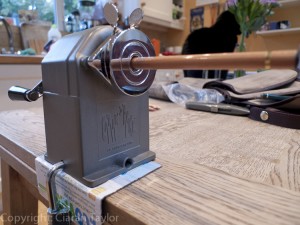
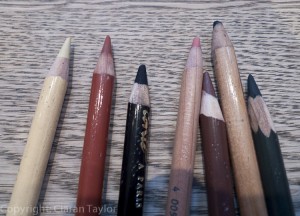

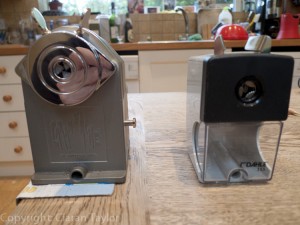
You said sharpening pencils would be fun! It wasn’t! I demand a live mouse right now for my trouble!
Pickle: don’t be so lazy, there are plenty of mice in the meadow for you to catch yourself! But please don’t bring them in and leave blood smears on the floor.
I still have a piece of lead stuck in my hand from when I accidentally stabbed myself with a pencil back in the 5th grade during art class.
You can do great things with a very sharp pencil, but you must treat its sharpness with respect!